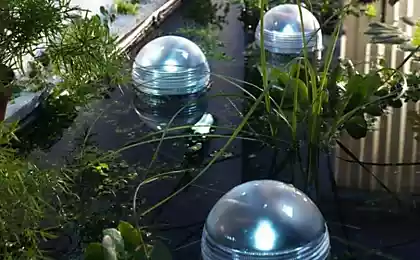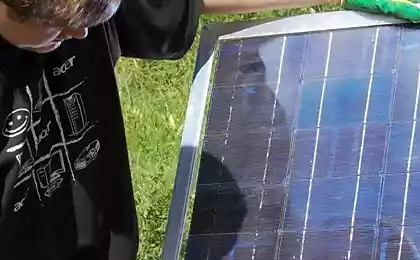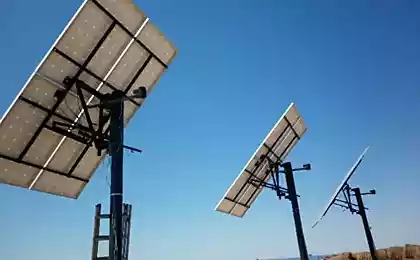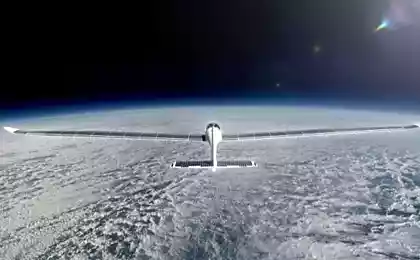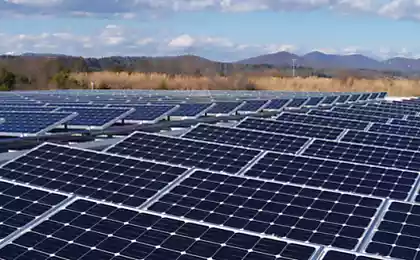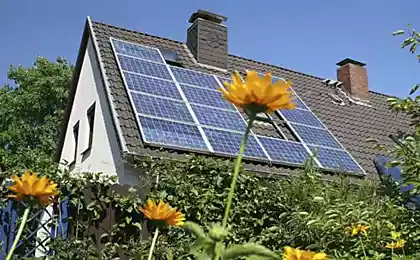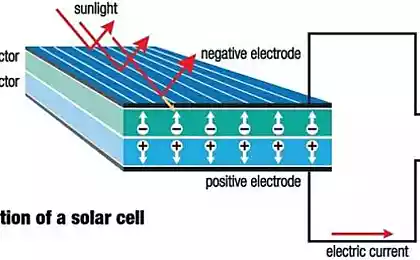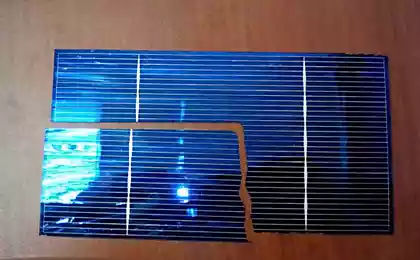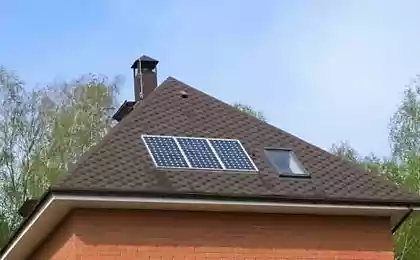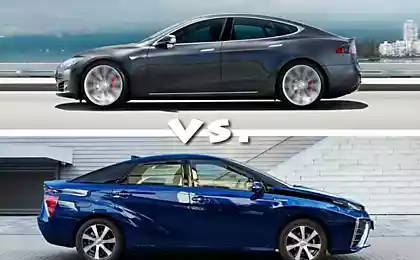730
Solar-powered cars (18 photos)
"Solntsemobili", ie Cars traveling in energy derived from solar panels, no longer science fiction. Moreover, each year in Australia are mnogodnevnyemezhdunarodnye race of innovative vehicles. For example, this year 37 cars, made in a futuristic design, overcame a distance of 3 thousand. Km - from the city of Darwin in the north to Adelaide in the south. Marathon took about a week. At the same time the car moved on solar energy machines only during the day, and at night they turned into electric vehicles.
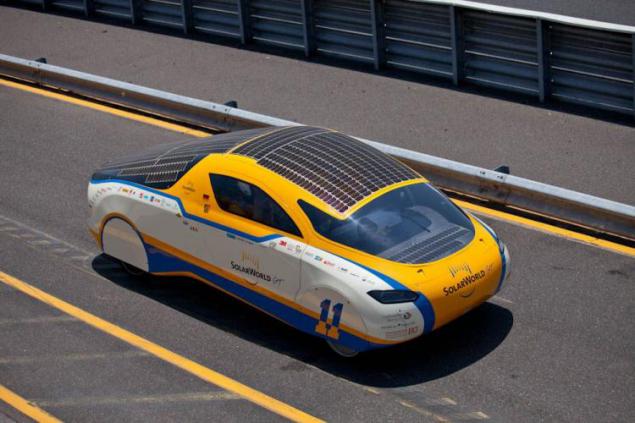
1. The first solar-powered electric car was shown to the public back in 1955. It was a small unmanned model.
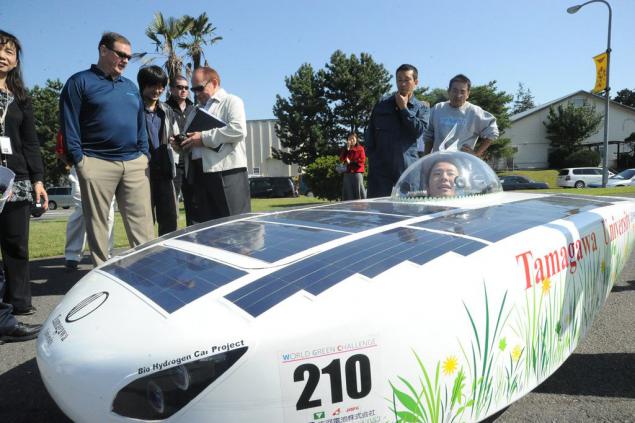
2. And in thirty years later, in 1987, were the first cars worldwide competition for solar-powered.
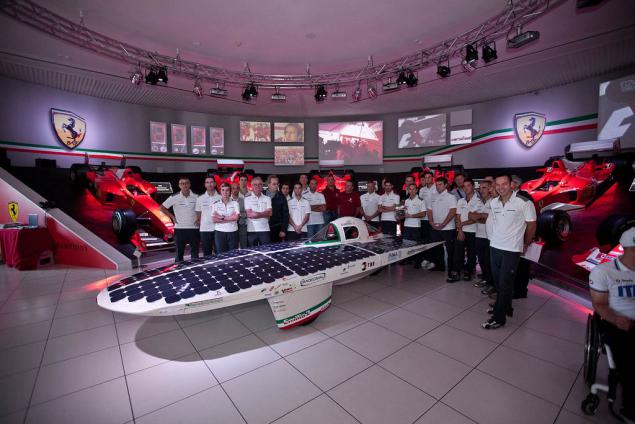
3. Since then, each year in Australia runs a contest similar self-propelled carts - Australian World Solar Challenge. The distance from Darwin to Adelaide, which overcomes the participants is 3010 km.
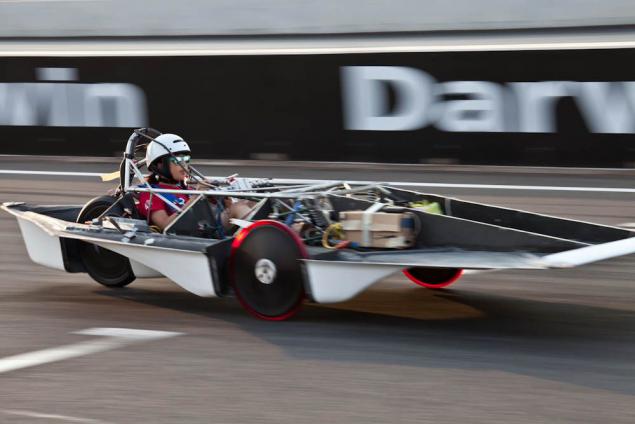
4. The place was chosen not casual, because the sun in Australia, more than anywhere else, and clear days there are about three hundred.
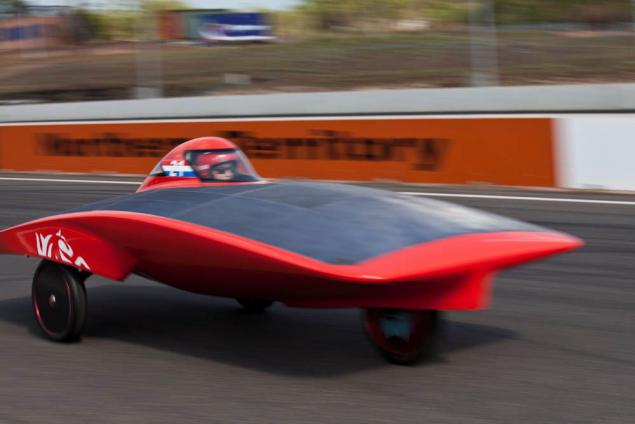
5. The main participants of these competitions are enthusiasts: student and research groups of universities. Some projects sponsored by major automotive companies.
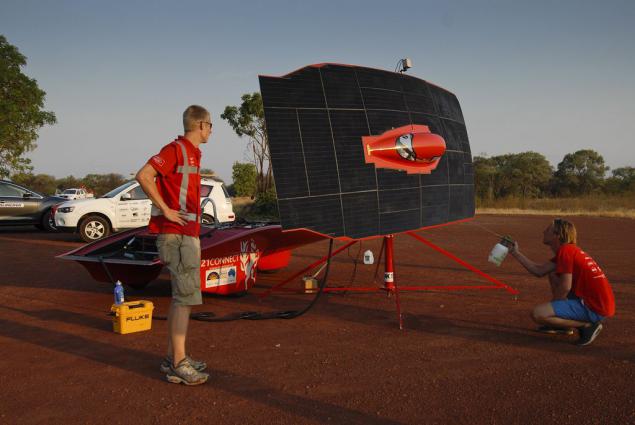
6. Similar competitions are equal to the show, which was observed every year about 200 million people, which means that you can optionally advertise their products.
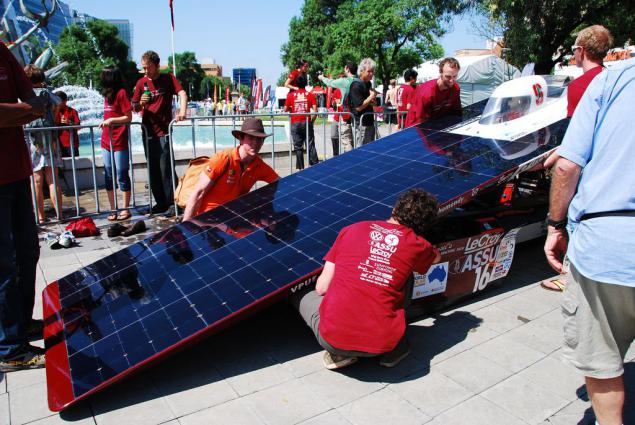
7. The results are interesting not only for the automotive industry, for satellites in space for a long time are powered by the sun.
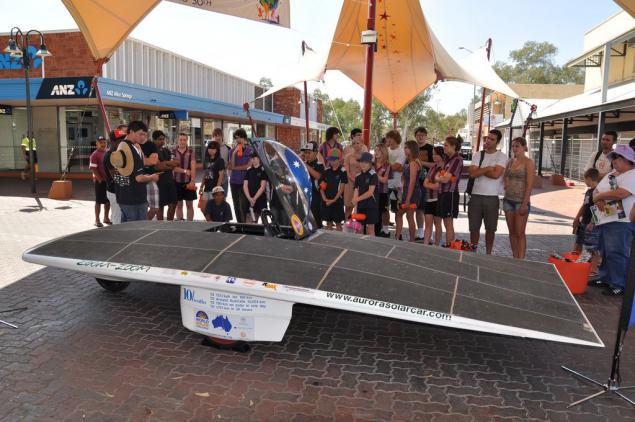
8. Interested such cars not only in sunny Australia. For example, in the United States, in Denver, held annually on the acceleration of the race. Distance, as befits the canons of this sporting event, is 402 meters. The results can envy the owners of cars that use that same gasoline. "Karrent Elimineytor - 3" to overcome this distance spends only 10, 23 seconds.
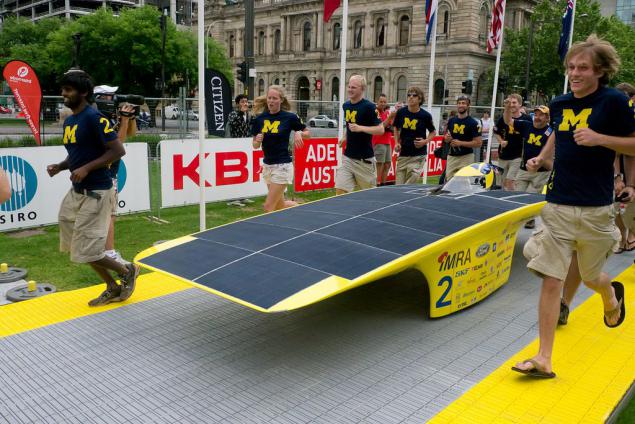
9. However, despite the fact that in order to move these machines do not expend a drop of gasoline, the problem of "solntsemobiley" not only in the absence of sunshine, as it seems at first glance.
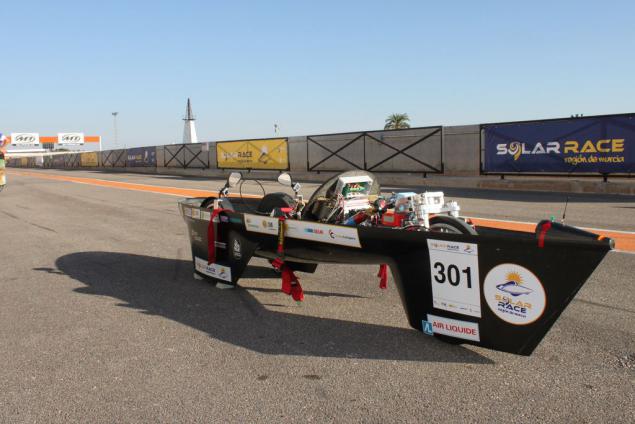
10. Even in clear weather and good efficiency of solar cells is 15%. While the efficiency of the internal combustion engine is equal to 40-45%, i.e. three times greater.
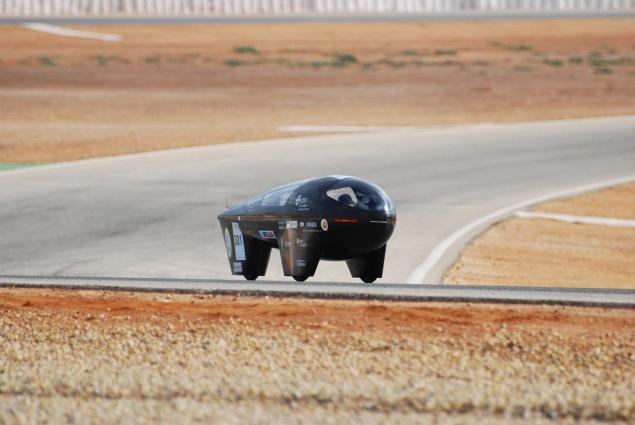
11. Another shortcoming of these cars - power. They develop not much more than 1 liter. from. and it is provided that the area of photovoltaic cells about two square meters, so the speed of these machines is also not great. 100 km / h, in good weather and favorable winds, considered a very good indicator.
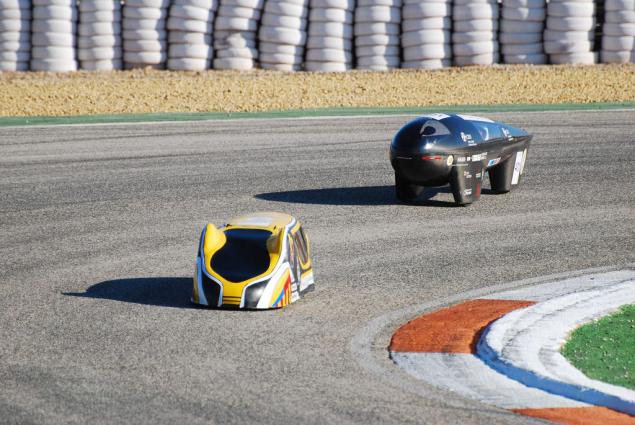
12. And yet there are optimists who believe in the future of such vehicles.
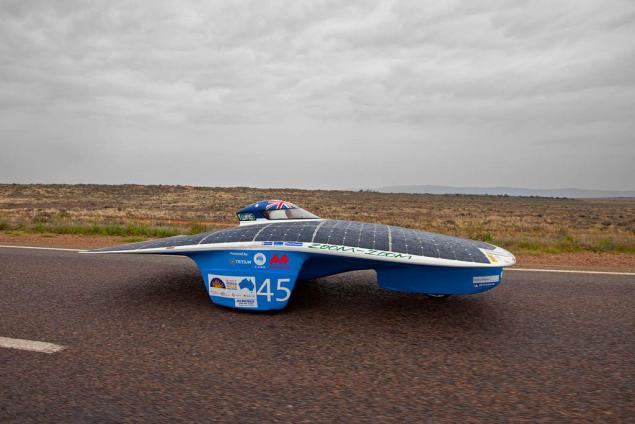
13. Thus, the French company Venturi today already has two projects of electric vehicles ready for series production - is Ecletic and Astrolab. Last even like a sports car, but only superficially. Boasting enchanting power, they can not yet. Eclectic is capable of only 22 liters. a.
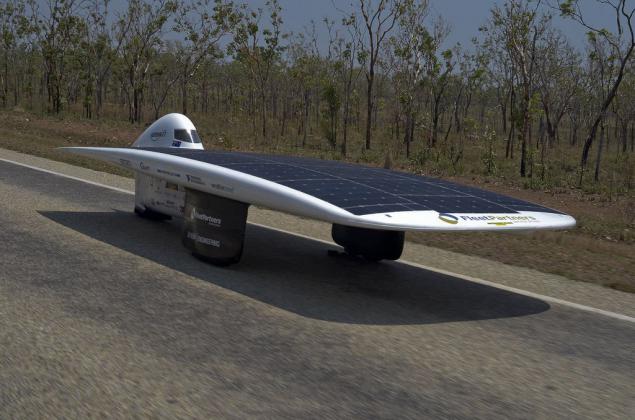
14. These cars are certainly moving without gasoline, but not for long. Charge, nickel-metal hydride batteries from solar cells lacking only 50 kilometers at a speed not exceeding 50 km / h.
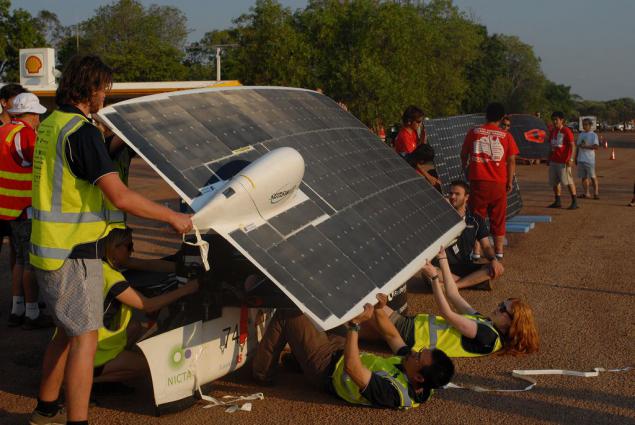
15. Developers and provided an option for cloudy days. In this case, the car can be connected to the network and five hours to hit the road again.
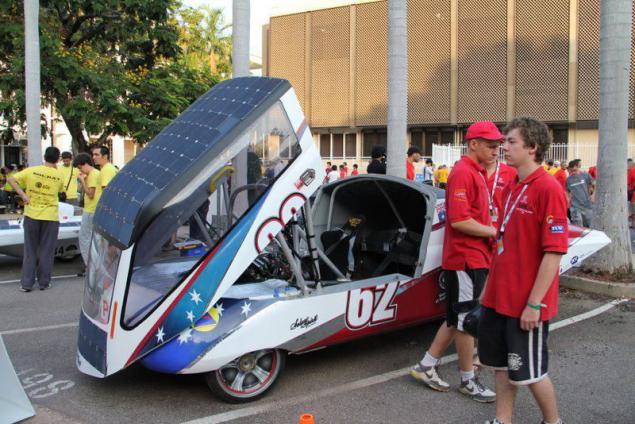
16. But if there is no sun, no power outlet handy, you can use the energy of the wind, which in strong winds enough to overcome 15 km.

17. Relative Eclectic - Astrolab can accelerate to 120 km / h, and its battery should last for 110 kilometers.
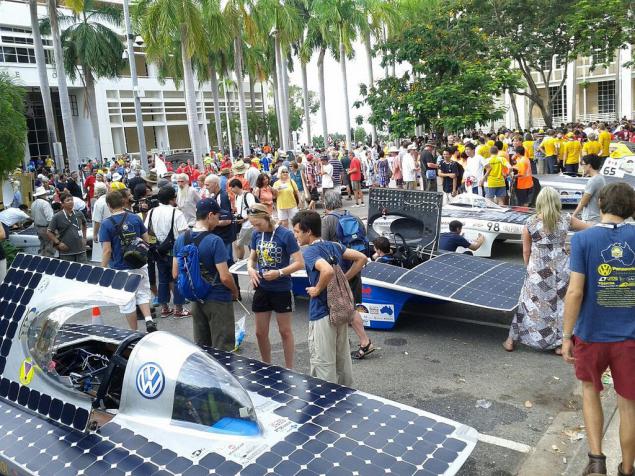
18. The cost of such vehicles shall be equal to the pre-25 th. Euros. So all this is can be called only toys, moreover also not cheap.

1. The first solar-powered electric car was shown to the public back in 1955. It was a small unmanned model.

2. And in thirty years later, in 1987, were the first cars worldwide competition for solar-powered.

3. Since then, each year in Australia runs a contest similar self-propelled carts - Australian World Solar Challenge. The distance from Darwin to Adelaide, which overcomes the participants is 3010 km.

4. The place was chosen not casual, because the sun in Australia, more than anywhere else, and clear days there are about three hundred.

5. The main participants of these competitions are enthusiasts: student and research groups of universities. Some projects sponsored by major automotive companies.

6. Similar competitions are equal to the show, which was observed every year about 200 million people, which means that you can optionally advertise their products.

7. The results are interesting not only for the automotive industry, for satellites in space for a long time are powered by the sun.

8. Interested such cars not only in sunny Australia. For example, in the United States, in Denver, held annually on the acceleration of the race. Distance, as befits the canons of this sporting event, is 402 meters. The results can envy the owners of cars that use that same gasoline. "Karrent Elimineytor - 3" to overcome this distance spends only 10, 23 seconds.

9. However, despite the fact that in order to move these machines do not expend a drop of gasoline, the problem of "solntsemobiley" not only in the absence of sunshine, as it seems at first glance.

10. Even in clear weather and good efficiency of solar cells is 15%. While the efficiency of the internal combustion engine is equal to 40-45%, i.e. three times greater.

11. Another shortcoming of these cars - power. They develop not much more than 1 liter. from. and it is provided that the area of photovoltaic cells about two square meters, so the speed of these machines is also not great. 100 km / h, in good weather and favorable winds, considered a very good indicator.

12. And yet there are optimists who believe in the future of such vehicles.

13. Thus, the French company Venturi today already has two projects of electric vehicles ready for series production - is Ecletic and Astrolab. Last even like a sports car, but only superficially. Boasting enchanting power, they can not yet. Eclectic is capable of only 22 liters. a.

14. These cars are certainly moving without gasoline, but not for long. Charge, nickel-metal hydride batteries from solar cells lacking only 50 kilometers at a speed not exceeding 50 km / h.

15. Developers and provided an option for cloudy days. In this case, the car can be connected to the network and five hours to hit the road again.

16. But if there is no sun, no power outlet handy, you can use the energy of the wind, which in strong winds enough to overcome 15 km.

17. Relative Eclectic - Astrolab can accelerate to 120 km / h, and its battery should last for 110 kilometers.

18. The cost of such vehicles shall be equal to the pre-25 th. Euros. So all this is can be called only toys, moreover also not cheap.
What it is considered a truly unique and delicious.
After a meeting with the Australian jellyfish (9 photos)
